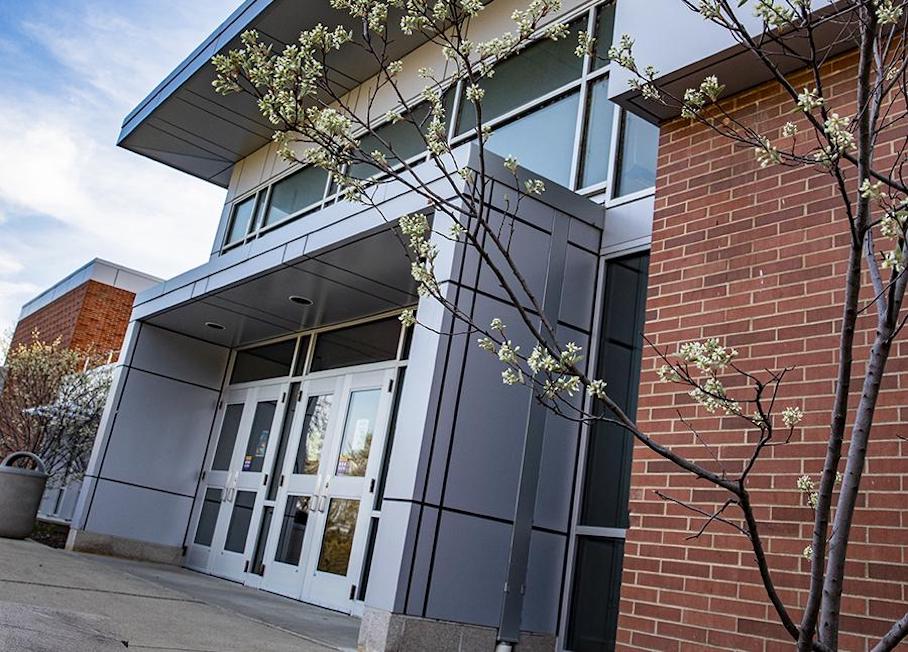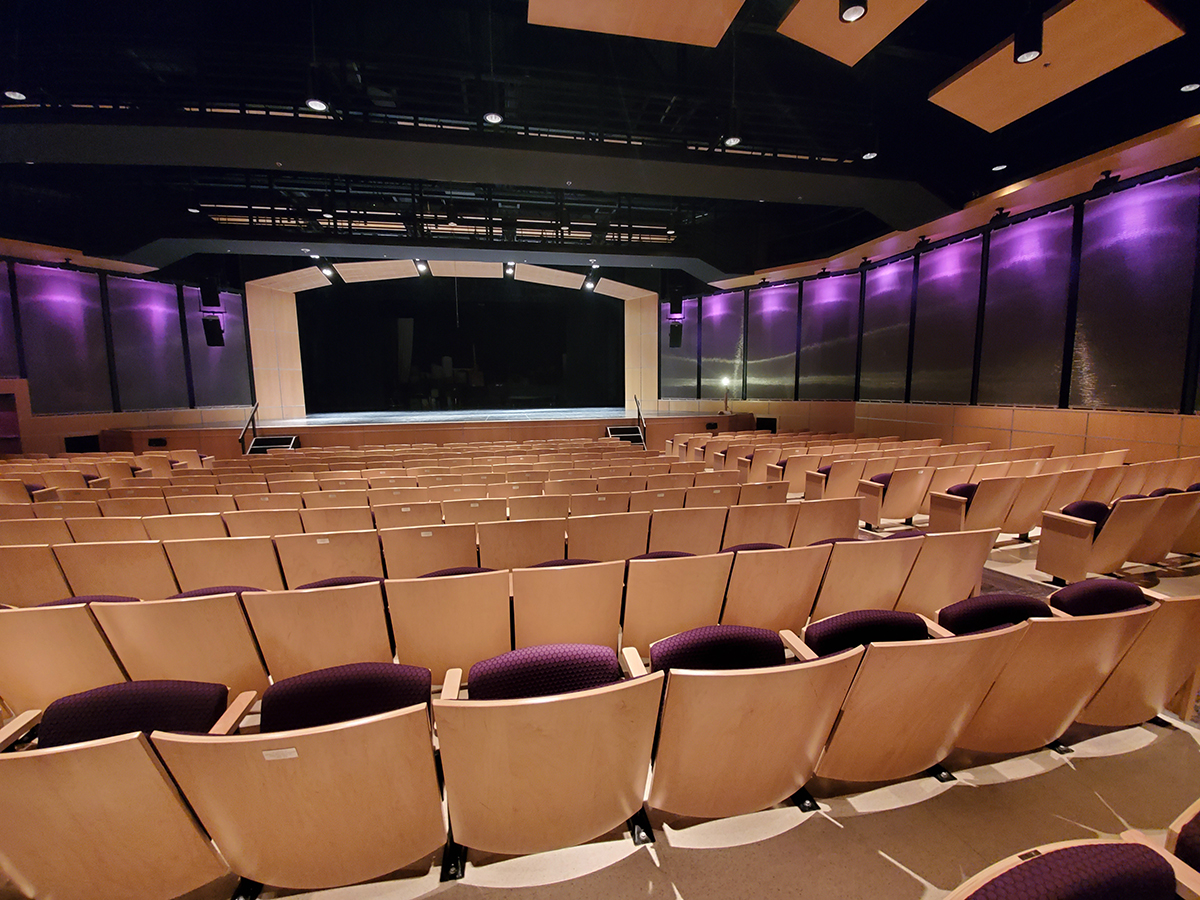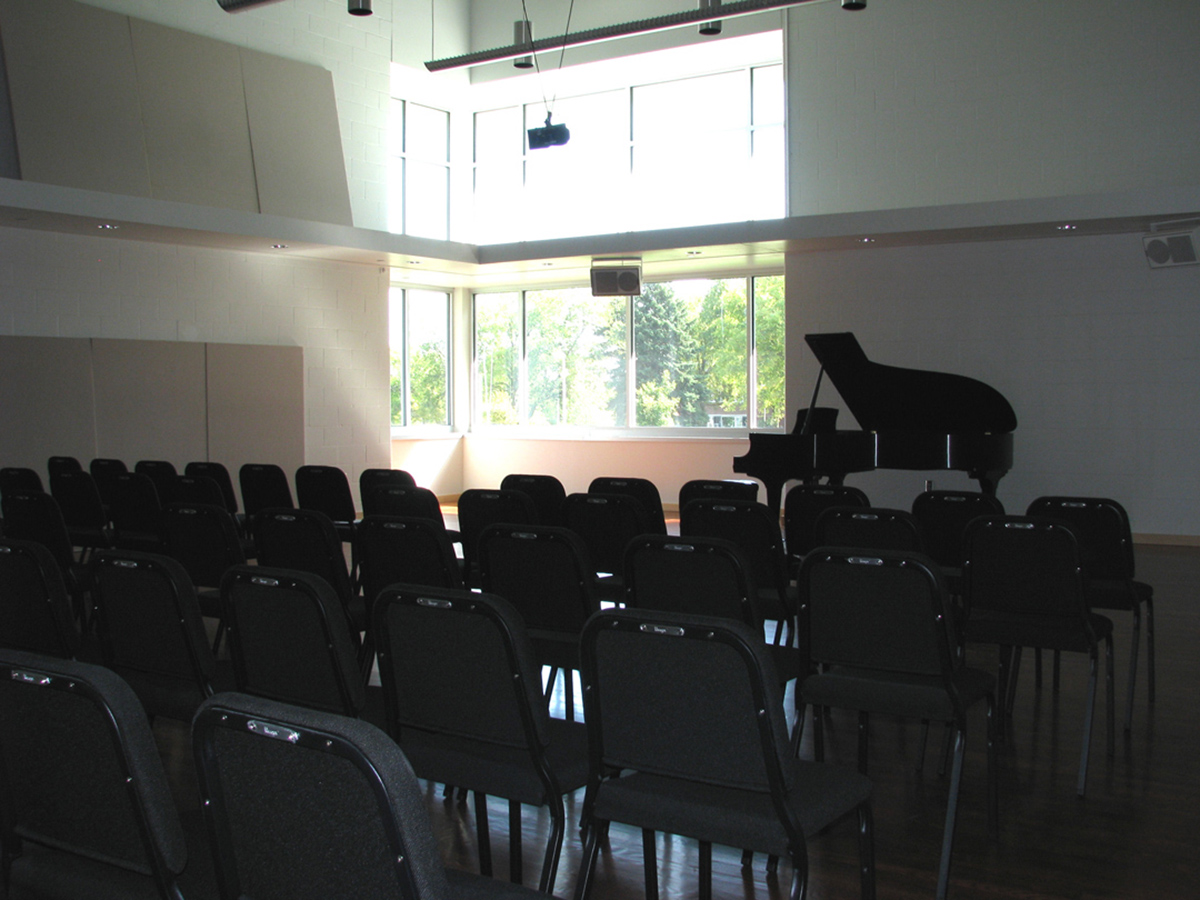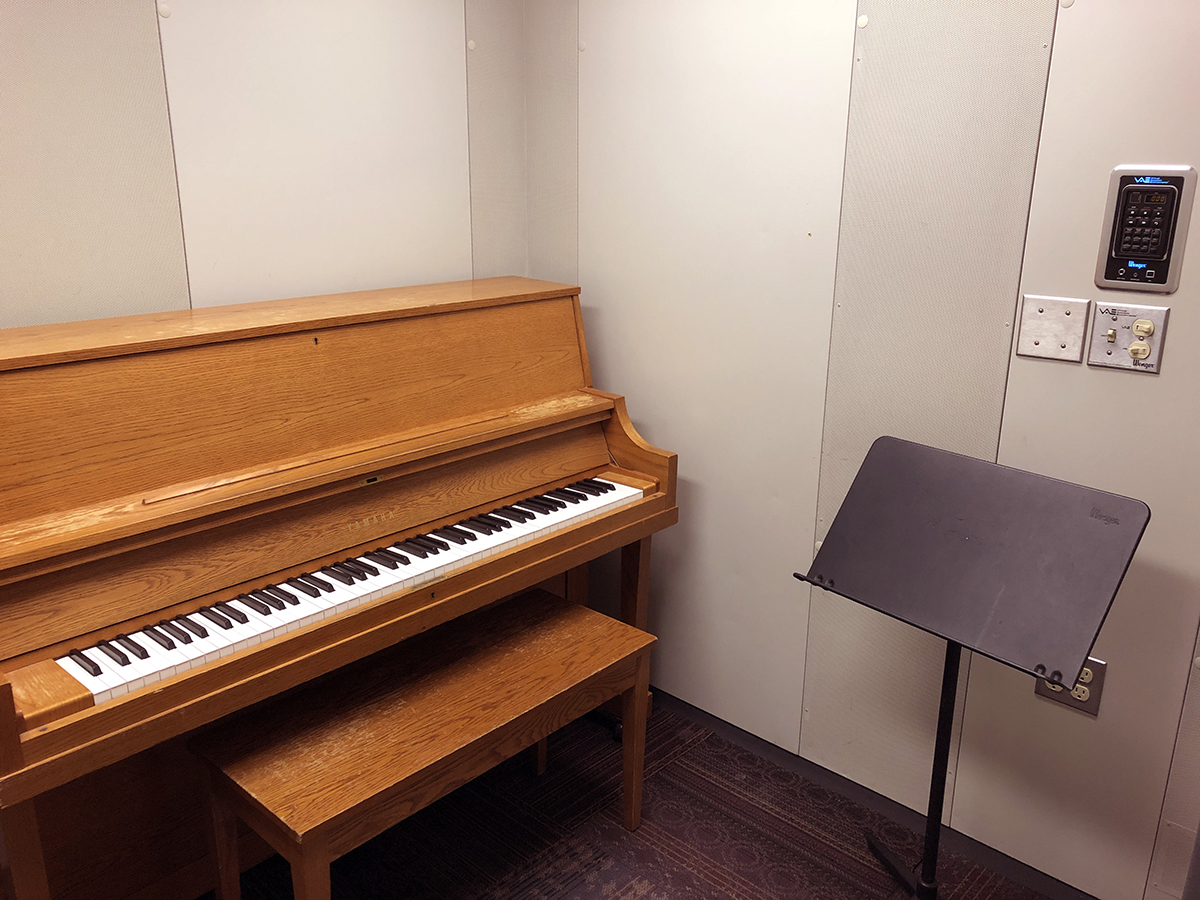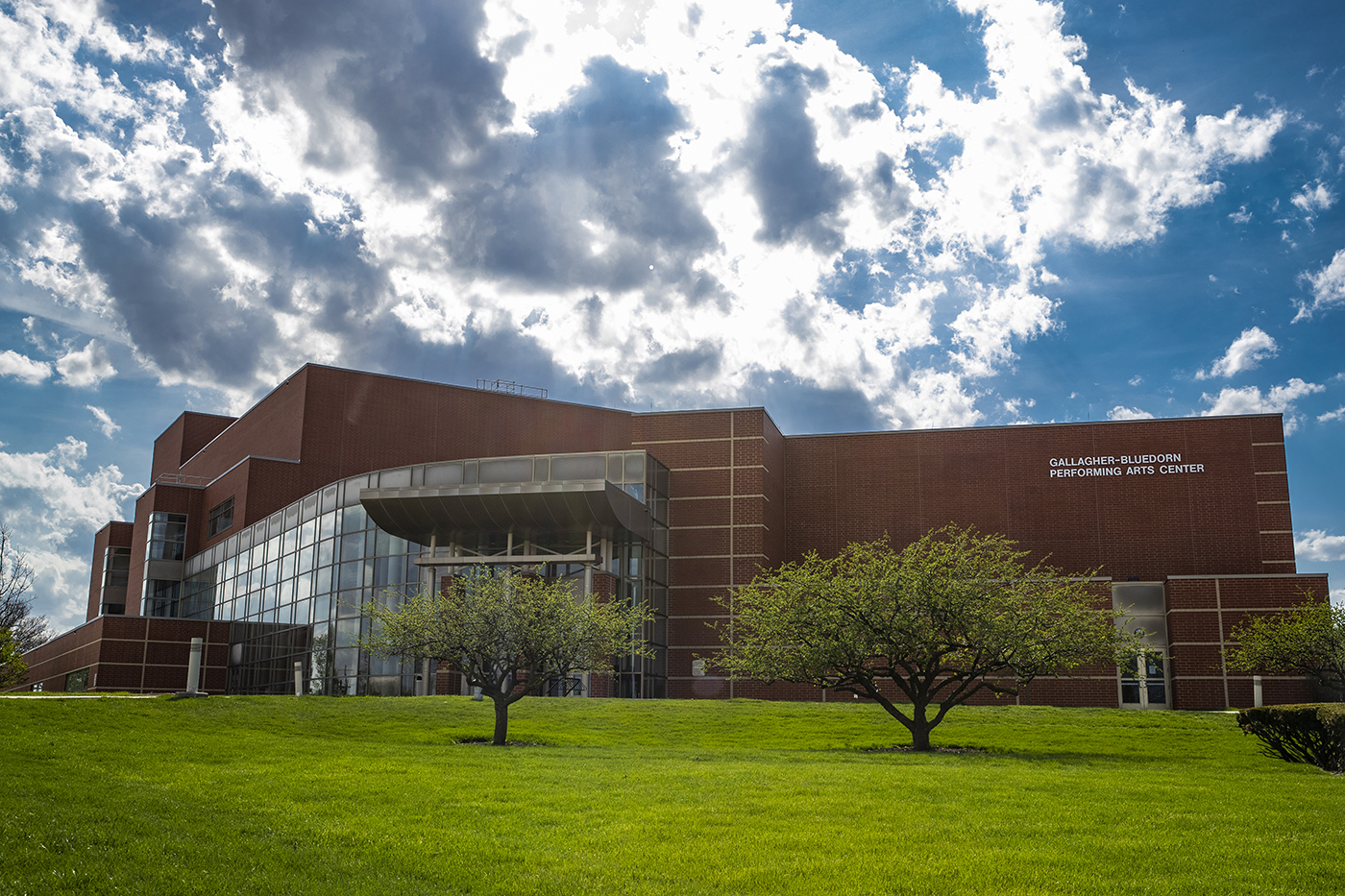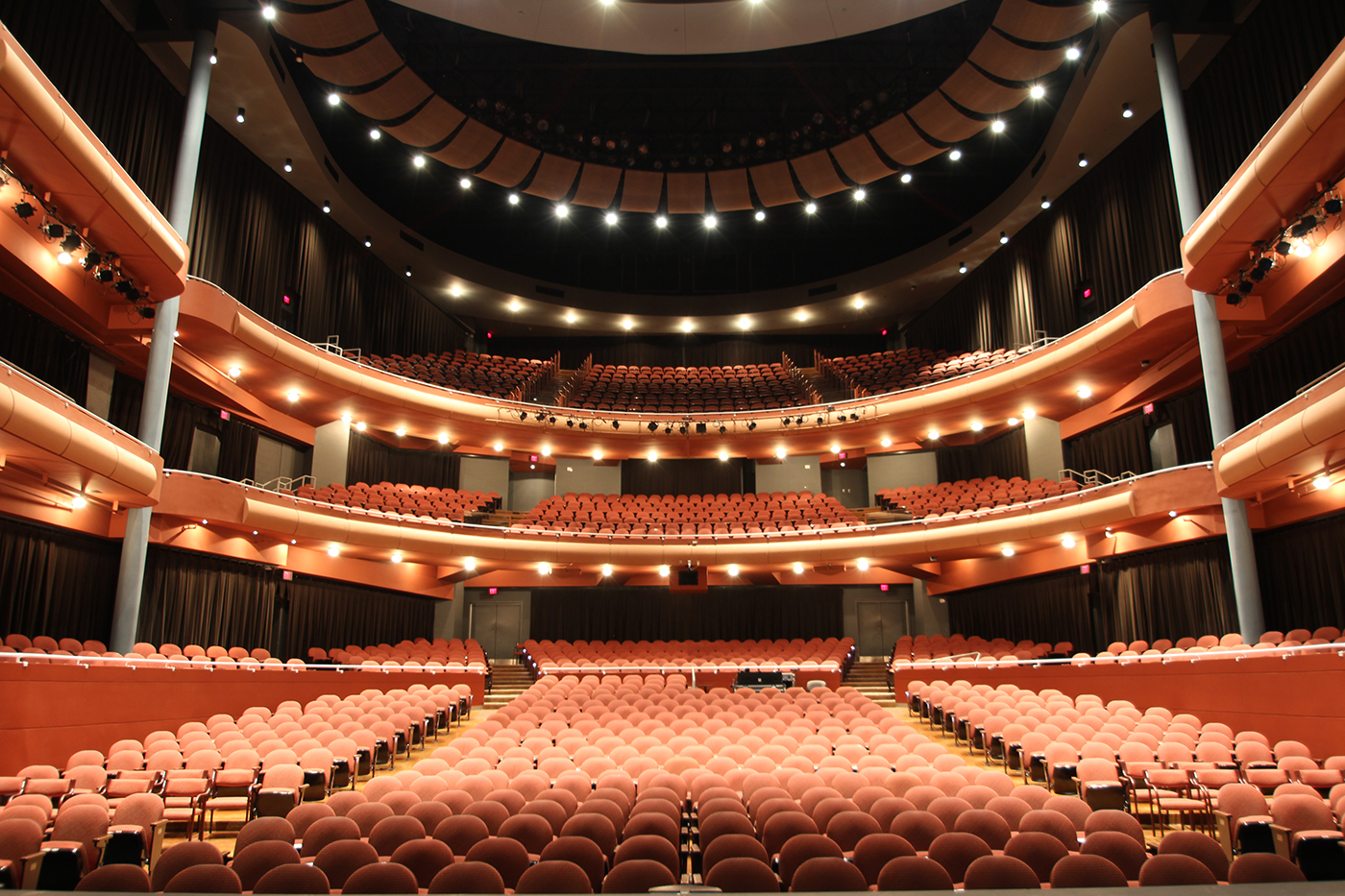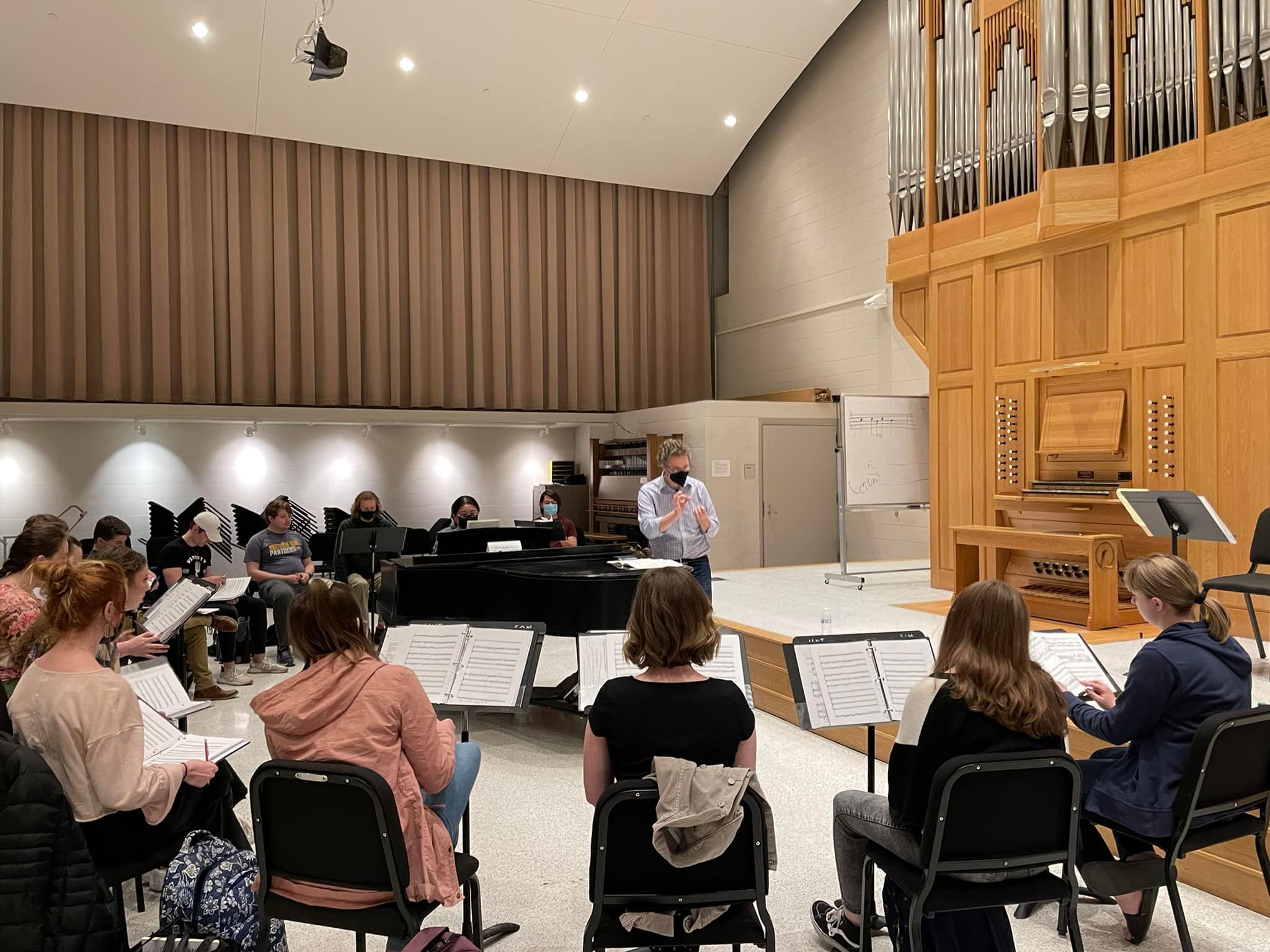About the School of Music
The School of Music, located within the College of Humanities, Arts and Sciences, is recognized as one of the finest music schools in the Midwest. Our professors are dedicated to the individual growth and development of every student, from undergraduates to master's-level candidates. Educational experiences at UNI include personal attention to build skill and technique, excellent facilities to promote studies, and abundant opportunities to showcase individual talent. Leading artists visit UNI each year and give individuals access to the finest talents in the world.
The School of Music, housed in Russell Hall and the 23 million dollar Gallagher Bluedorn Performing Arts Center, is proud to note that UNI is fully accredited by the National Association of Schools of Music. The 40+ faculty have gained national and international reputations as performers, scholars, educators, conductors, and composers.
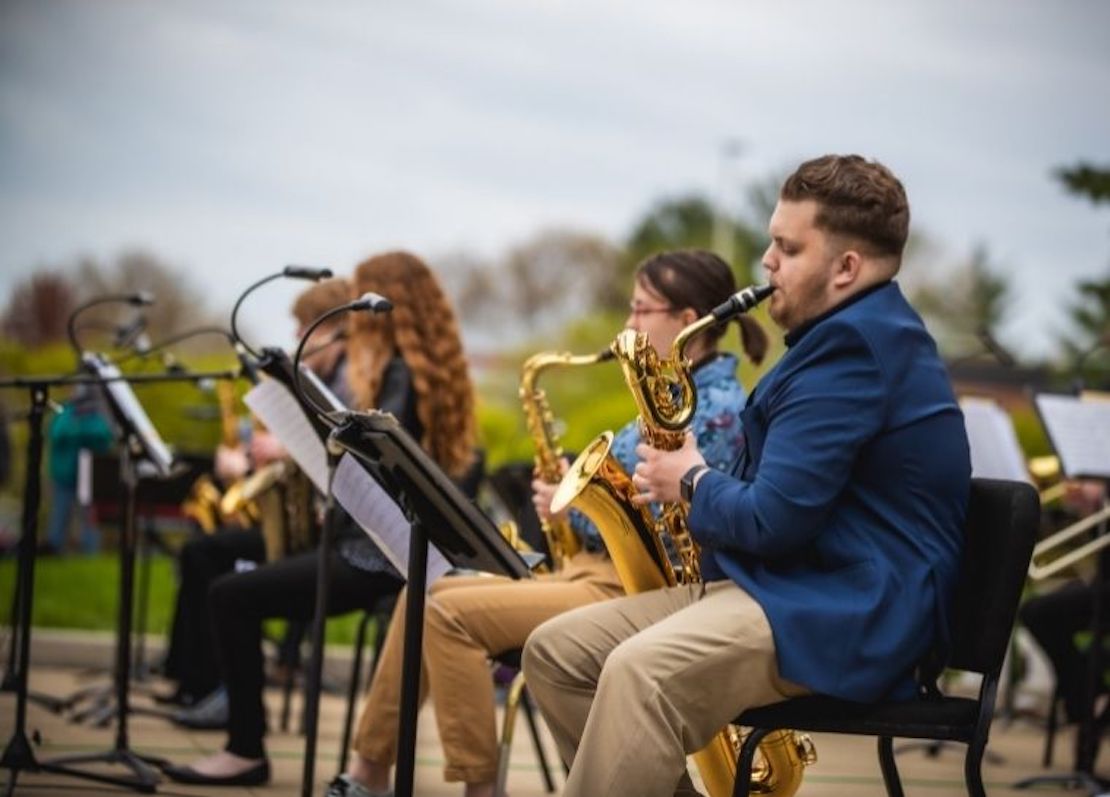
Our Mission
Our mission is to prepare music educators and professionals for the workforce in Iowa and beyond, while inspiring creativity, critical thinking, and an appreciation for music in a global context.
Director's Message
At the University of Northern Iowa, School of Music, we believe that music is an integral part of life as it uplifts spirits, provides solace and stimulates intellectual curiosity. Music and the study of music enriches and changes lives. Our faculty and staff are here to help mentor you on this journey of exploration to discover what life changing experiences your musical studies will bring.
We recognize that the study of music takes many different forms from music education to performance as well as music technology and performing arts management. At UNI, we offer many options for musical growth as a music major as well as options for those who do not major in music including performing opportunities and opportunities to pursue minors in music.
The UNI School of Music is an amazing community of artists, scholars, composers and performers who are committed to helping you grow and realize your full potential. An education from UNI is second to none and the School of Music is fully accredited by the National Association of Schools of Music.
Our facilities are outstanding and readily available for your use as a performer and audience member. The Great Hall of the Gallagher Bluedorn Performing Arts Center with a capacity of 1600 is the performing venue for all of our large ensembles. It also hosts a wide array of national and internationally known artists on an almost weekly basis for your enjoyment. In addition, there are four other performance venues to accommodate any type of concert.
Educational experiences at UNI include personal attention to build skill and technique as well as rich opportunities to develop as an artist. You will experience abundant opportunities to broaden and showcase your individual talent. Students compete and perform successfully both nationally and internationally.
For over a century, the UNI School of Music has been a leader in music education in Iowa and nationally. We supply the largest number of music teachers in Iowa of any university. Our performance majors have been accepted into the best graduate schools in the country and are performing professionally around the world. Our students receive an outstanding, well-rounded education at UNI that allows them to pursue fulfilling and exciting career opportunities.
Please plan to visit us at the University of Northern Iowa, School of Music in the near future. You will be welcomed by our faculty and students and I am confident you will be impressed with what we have to offer you.
Sincerely,
Dr. Melinda Boyd
Professor and Director of the School of Music
Explore Our Facilities
Russell Hall
Russell Hall is one of two major facilities housing the School of Music. It has been the home of the School of Music since 1962 and re-opened after a 10 million dollar renovation which occurred in 2007-08. The building contains a recently renovated 400-seat auditorium and a new addition which includes a chamber music hall, jazz rehearsal room (jazz studio), state-of-the art recording studio. New music education classrooms were added along with technology enhanced classrooms throughout the building. Newly built practice rooms (including recording and sound isolated practice modules), faculty offices, dressing rooms, instrument repair room, computer/composition lab, and a complete renovation of the remaining spaces are features of this facility.
Gallagher Bluedorn
Built in 2000, the Gallagher Bluedorn Performing Arts Center (GBPAC) fulfills the needs of UNI's School of Music. It contains several classrooms, practice rooms, and auditoriums. Here, you will also find the Waterloo-Cedar Falls Symphony and an outstanding visiting artist series. The main auditorium of the GBPAC is the Great Hall. State-of-the-art rigging, lighting, audio systems and orchestra pit convert the hall easily from concerts to theatricals and provide UNI students with experience on the latest equipment. The hall is also equipped for broadcasting and high quality recording. Backstage includes four "star" and two chorus dressing rooms, a catering kitchen and double loading dock. The GBPAC is also home to Davis Hall, a 225-seat flexible rehearsal and recital hall, as well as Jebe Hall, home to a $500,000, 38 rank tracker organ built for the center by Wolff & Assoc. of Laval, Canada.
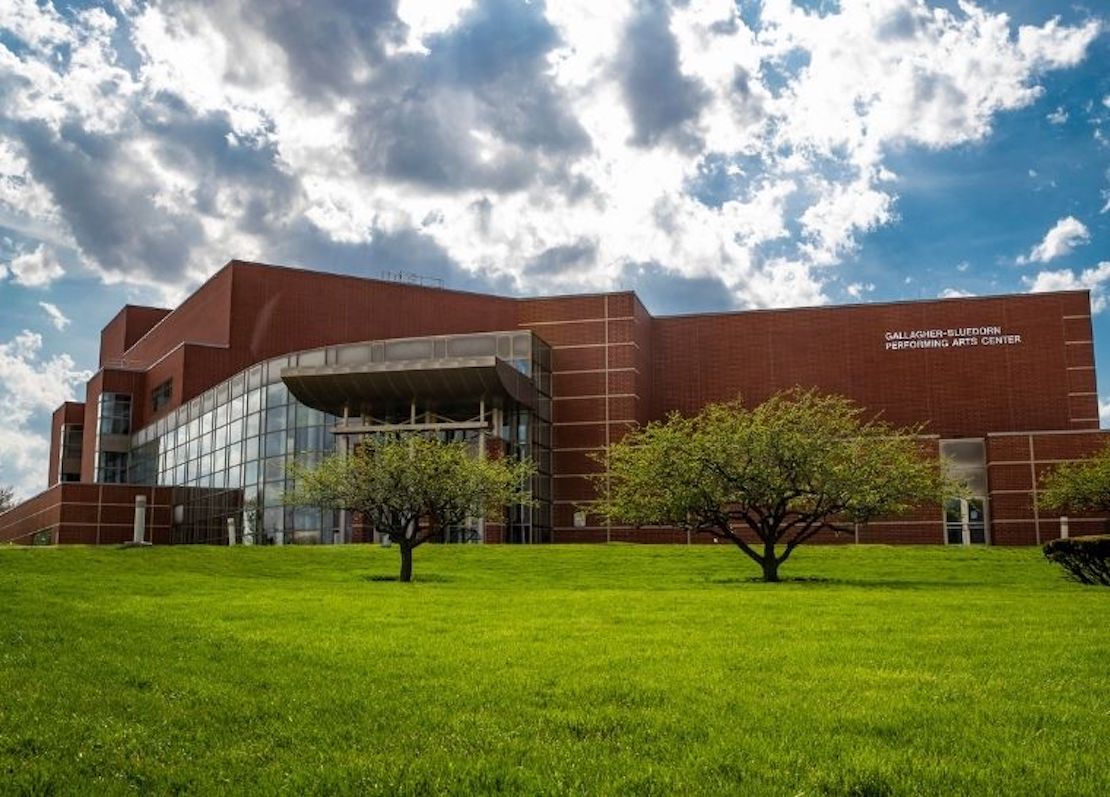
+ Winter Break Hours 2025-2026
Regular Building Hours for Russell Hall
Monday - Friday, 7 a.m. to 10:30 p.m.
Saturday, 8 a.m. to 5 p.m.
Sunday, 12 to 5 p.m.
Regular Building Hours for GBPAC
Monday - Sunday, 7 a.m. to 10:30 p.m.
Russell Hall Computer Lab
RSL 147 computer lab is open/unlocked from 8 a.m. to 4:30 p.m. Monday through Friday.
Music majors and minors may access extended building and computer lab hours using their UNI ID card. For a list of current extended hours, visit the music office.
Musicians Classifieds
Looking to hire a musician for an event?
- Look through our listing page for a list of student ensembles who are available to be hired.
- Contact the Community Music School (piano, brass, woodwind, percussion and voice) or the Suzuki School (string instruments) for information on private lesson opportunities.
- Or submit a request on our Seeking Musicians page.
Are you a student looking to be hired for an event?
- Look through our wanted page, a list of people who are looking to hire musicians.
- Add your ensemble or solo performer information on our Musician Listings page.
- Contact the Community Music School or Suzuki School to find out about private lesson teaching opportunities.
CLICK HERE TO VISIT THE MUSICIANS CLASSIFIEDS!
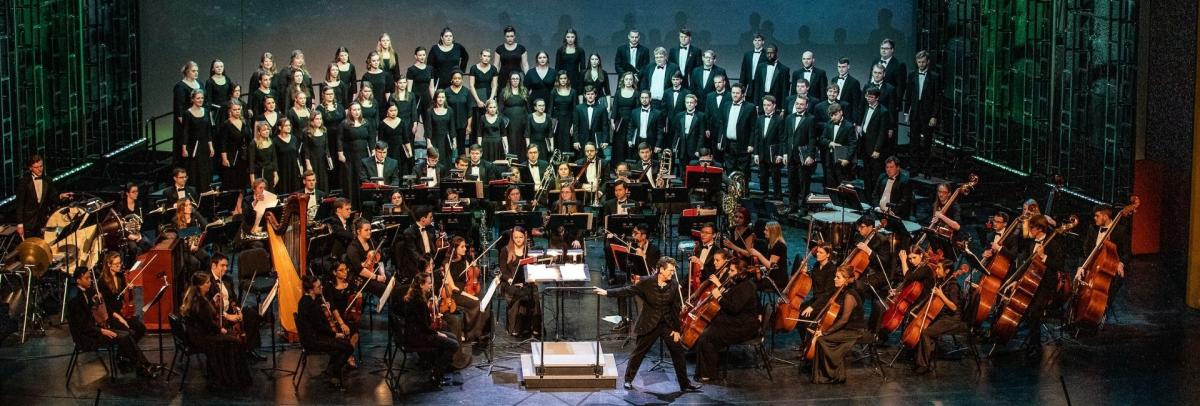
Instructional departments offering art and music classes have gone through a number of significant name changes over the course of UNI history. When the institution was founded in 1876, as the Iowa State Normal School, courses in art and music were offered in the Art Department. This department name persisted until 1892, when the school began to go through its first major differentiation of subject matter and department reorganization. In 1892, the Art Department split into the Penmanship and Drawing Department and the Vocal and Instrumental Music Department. In 1894, the Penmanship and Drawing Department became the Drawing Department. The Drawing Department and the Vocal and Instrumental Music Department persisted until 1896, when they both changed to simpler and more inclusive names. The Drawing Department became the Art Department, and the Vocal and Instrumental Music Department became the Music Department.
The Art Department persisted until 1907, when its programs were folded into the new Manual Arts Department. This unusual combination of Art and Vocational Education would recur, with Art emerging as an independent department and then returning to some sort of combined department. In this instance, art classes stayed in the Manual Arts Department just two years. In 1909 the Art Department emerged and remained independent until 1922, when it became part of the new Art and Manual Arts Department. This name was stable until 1935, when the name was simplified to Arts Department. In 1948 the Arts Department split into the Industrial Arts Department and the Art Department. The Art Department has remained an independent department since that time.
The Music Department name remained stable until 1909, when it began to go through a period of differentiation. In 1909, the Music Department split to become the Public School Music Department, Orchestral and Band Music Department, Pianoforte Music Department, and the Voice Department. It is not clear how substantial these differentiations were. Only one of these "departments" had a department head, for example, and each of the faculties was very small. But the catalogue notes these highly specialized groups. This differentiation does establish the split between music for education (Public School Music) and music for performance (Orchestral and Band, Pianoforte, and Voice) that would exist for many years to come.
This array of departments lasted just two years. In 1911 there were only two music departments: the Music Department and the Violin, and Orchestral and Band Music Department. In 1916, the Violin, and Orchestral and Band Music Department simplified its name to Orchestral Music and stayed with that name until 1934. In 1919, the Music Department shifted to Public School Music for one year, after which it returned to Music Department. In 1929 it again changed to Public School Music before shifting back again to Music Department in 1931. In 1934, long-time head of the Music/Public School Music Department Charles A. Fullerton retired from the regular instructional faculty and moved to the Extension Division. The college took that opportunity to combine the Orchestral Music Department and the Music/Public School Music faculty into a single department called simply the Music Department. This name remained unchanged until 1978 when the department became the School of Music.
Both the Art Department and the Music Department (now School of Music) have been departments in the College of Humanities and Fine Arts since its organization in 1968.
Parking Information
When you visit the School of Music at UNI, there are several options for parking on campus. The most convenient parking lots are the GBPAC Visitor's Lot, located directly north of the Gallagher-Bluedorn building, and the West Gym Lot, located to the north and east of Russell Hall.
Extended parking access for music students:
Music students needing to practice in Russell Hall after 5 p.m. should plan to park in the West Gym A lot. Vehicles may park there until 2 am with the appropriate UNI permit.
You may find all other rules and regulations here on the Parking Division's website.
Recruiting Materials
- View or Download Recruiting Materials
Click on each piece to view, or to retrieve a shareable link to the individual piece (copy and paste the URL in your browser's address bar once you are viewing the PDF you'd like to share):
- Music as Life - detailed overview of the School of Music
- At a Glance - quick reference to facts and highlights of the music program
- Scholarships and Assistantships
- Music Ensembles
- Bachelor of Arts
- Brass
- Composition and Theory
- Jazz
- Keyboard
- Music Education
- Percussion
- Strings
- Voice
- Woodwinds
- Graduate Programs (other than Music Education)
- Music Education MM (online program)
- 2025 Rhythms Newsletter
- 2025 Circle of 5ths Poster
- 2025-2026 Festivals, Workshops and Audition Days
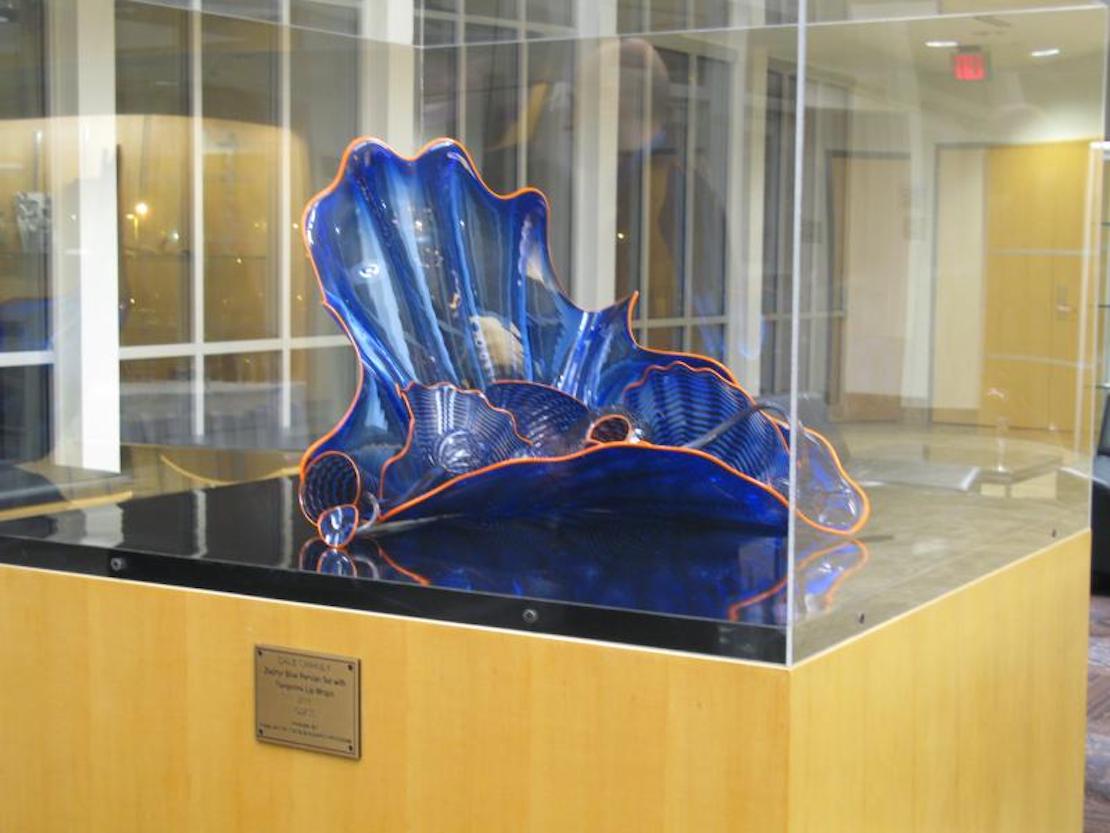
Russell Hall is home to many stunning works of art, including the piece "Zephyr Blue Persian Set with Tangerine Lip Wraps”, created by world-renowned artist Dale Chihuly. On April 22, 2011, the School of Music was proud to host the Art and Architecture committee in the Russell Hall lobby for the unveiling of this breathtaking glass artwork. Chihuly has created more than a dozen well-known series of works, and is also celebrated for large architectural installations. His work is included in more than 200 hundred museum collections worldwide. He has been the recipient of many awards, including ten honorary doctorates and two fellowships from the National Endowment for the Arts. The School of Music is thrilled to become the permanent home for this stunning piece of art. Next time you are on campus, be sure to stop by Russell Hall to explore and enjoy this artwork.
Historically speaking, Russell Hall (then known as "The Music Building") was remarkable in that it was the first campus building into whose design art was incorporated during or shortly following construction. This has since become standard in the design and construction of campus buildings. There are two major artworks incorporated into the Music Building. First, there is the bandshell, designed by art faculty member David Delafield, that forms the south wall of the building.
And, second, there is the freestanding sculpture on the east side of the building, Symphony in Three Forms, created by art faculty member Don Finegan. Professor Finegan said that his work developed out of an original need for some sort of outdoor sign denoting the name of the Music Building. He said that he dropped in to talk with the architect, and his project evolved from that discussion.
Curtiss-Fullerton Hall of Fame
In 2008, the university constructed a Hall of Fame Wall in Russell Hall to honor outstanding musicians, alumni and friends of the UNI School of Music. It was determined that the individuals chosen for the award would serve as important role models for future generations of UNI musicians. We have some outstanding honorees in this group. Musical training has been central to the University of Northern Iowa from its inception in 1866 as an orphanage and from the beginnings of the Iowa State Normal School in 1876. From even the earliest days of our institution, there were outstanding music educators who were making a difference throughout Iowa and on the national stage. That is a legacy that the UNI School of Music is very proud to celebrate.
Two of the most influential educators in our rich history were Julia Curtiss and Charles A. Fullerton. Fullerton began his long association with the School of Music at Iowa State Normal School, now UNI, in 1885 as an undergraduate and retired 50 years later as the head of the department. He is most famous for developing a method for teaching music in rural one-room schoolhouses that could be implemented by any teacher regardless of musical training ("The Choir Plan"). Using recording technology as a mode by which students could learn music revolutionized rural school education. Julia Curtiss began teaching piano at Iowa State Normal School in 1888 and retired in 1908 as the director of piano. She came to Iowa from the East Coast where she studied with several prominent pianists and received a special certificate from the New England Conservatory of Music. Her first year, she founded the Cecilian Glee Club, a group that is known today as The Cecilians. This ensemble has the distinction of being the oldest, continuously active choir in the university’s history. Curtiss went on to found and direct the Minnesingers in 1890 (known as the I.S.N.S. Glee Club until 1893) in conjunction with Charles Fullerton in order to give the school’s men an outlet to sing, then founded and lead the Euterpean Glee Club in 1895. The Euterpean’s became the first mixed-voice singing ensemble at the university. Under Julia’s direction these groups gave concerts and collaborated to stage light operas.
In honor of these outstanding achievements and Curtiss' and Fullerton's influence on the foundation of the School of Music, in 2018 the Hall of Fame was officially named the Curtiss-Fullerton Hall of Fame.
Award recipients can be viewed in the Russell Hall lobby and new honorees are nominated and awarded frequently.
Stewardship Statement
The University of Northern Iowa honors the ancestral stewards of the land on which our university rests. Through the work we do every day to live our mission, the University of Northern Iowa aspires for you to see a community that: honors Native and Indigenous People and culture, lives the 7th Generation Principle, does good for the people and communities we serve, and embraces stewardship of our mission and land. Please see our full stewardship statement at president.uni.edu/stewardship-statement.

